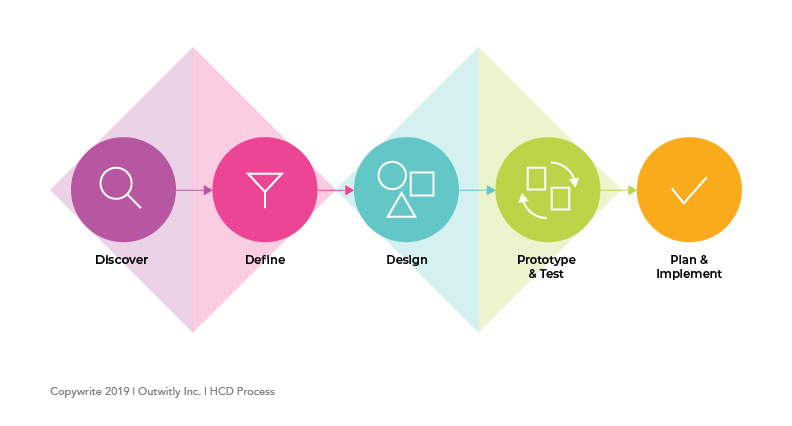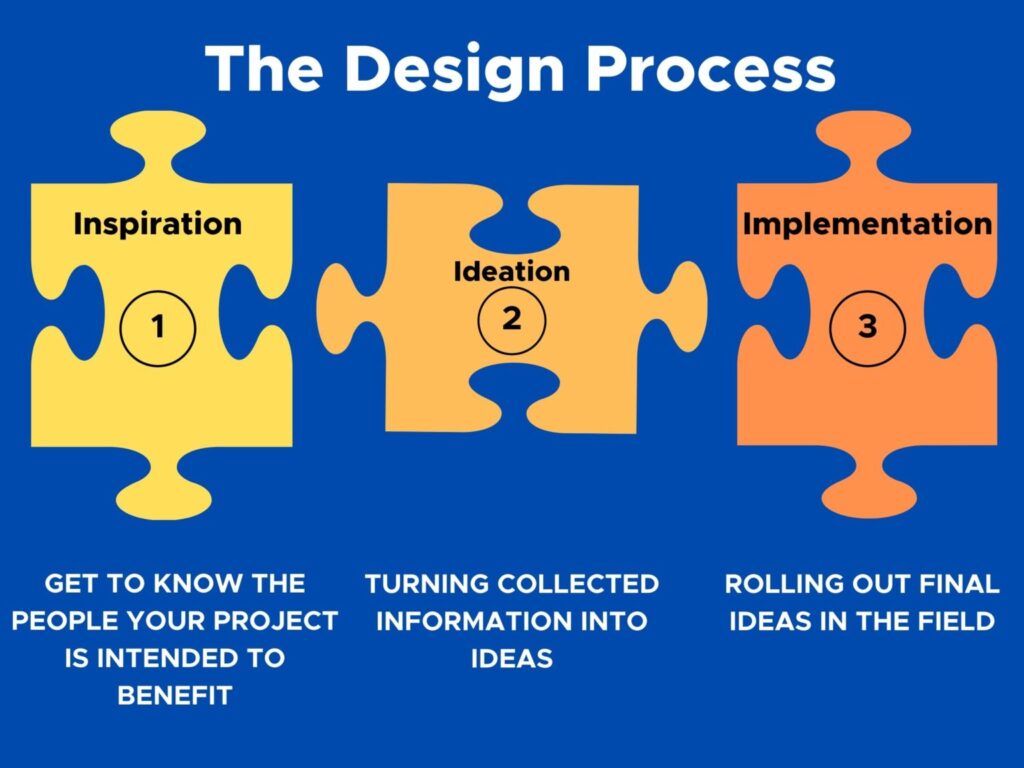Human Centered Design

“Human-centered design is a philosophy, not a precise set of methods, but one that assumes that innovation should start by getting close to users and observing their activities.”
Donald A. norman, co-founder of nielsen norman group
DEVELOPMENT ETHICS IN HUMAN-CENTERED DESIGN:
When designing, there are many factors a designer must consider, such as the purpose of the design, the intended audience, and its broader impact. Each designer brings unique perspectives and biases, which shape how they approach these aspects. Unfortunately, history includes cases where designs served only certain interests, purposely causing negative returns. Examples include Apartheid and the segregation of America’s cities, where systems were built not only to benefit some but to disadvantage the rest of the population.
Admittedly, it is difficult to prevent people who choose to design with ill intentions. However, we can strive to create more equitable designs, both large and small scale, by focusing on enhancing human dignity for all. The concept of development ethics has recently emerged to guide us in asking ethical questions in development projects, much like we already do in fields like business or medicine. This means evaluating whether development efforts genuinely benefit recipients or merely serve political agendas. Human-centered design assists this process by bridging the gap between designers and those for whom the design is intended, sometimes even removing this divide entirely. According to IDEO, this process follows a cycle of three steps: “Inspiration, Ideation, and Implementation.”
Defining Human-Centered Design
The Short and Simple Version
Human-Centered Design is the idea and practice of incorporating the audience’s input into the design process.
The Comprehensive Version
Human-Centered Design is an innovative approach to developing new ideas and products by involving the people for whom the design is intended throughout the entire design process. While it is mainly used in design, it is also applied in diverse fields, from engineering to the arts.
Human-centered design is a versatile concept applied across industries. In development projects, it excels in fostering personal communication. Once a problem is identified, initial research involves gathering insights directly from those affected, bringing the community’s challenges to life. This approach builds rapport, helping both designers and the community become invested in the project and achieving shared goals.

The following steps of ideation and implementation continue the design process without deviating from the human connection aspect. One quote that sums the goals of human-centered design well comes from Olivar Delarue, who worked as the UNHCR, “It is about them and for them. The closer the end-users’ needs are analyzed and answered, the more successful the adoption or purchase of a solution. You iterate until you get it right from a customer perspective. This is the power of HCD.”
1. Inspiration: Identify the Needs
The first step of the human-centered design approach is, ‘inspiration.’ This requires the designer to get to know their audience and the issue at hand. In this step, project designers are encouraged to empathize with the audience of the potential project and commit to understanding their experiences. This step is the foundation of the HCD approach because it helps the designer engage with the community they are working with and come up with more streamlined solutions that will be more relevant to the presented needs.
There are generally two parts to this process in Human-Centered Design:
– Knowing the community: To effectively implement the human-centered design approach, one has to get to know the community in which the problem resides. In best-case scenarios, designers are able to devote time to living in the community and experiencing first-hand the issues facing their audience. A designer can also perform extensive research on the community, via second-hand information. Through these methods, the designers gain a deeper understanding of the factors that contribute to the problem in question.
– Understanding the problem: The second aspect of the inspiration process is understanding the problem. Why are you choosing to address this issue and how does the problem manifest in the lives of the individuals? This aspect often entails performing interviews with community members and asking specific questions relative to the problem that’s to be solved.
IDEO and Human-Centered Design
IDEO is a design studio that has been a leading figure in the field of human-centered design. They both incorporate them into their many designs and teach the concept to others. One project of theirs that will be used as a best practice case study is Asili.
Case Study: Asili
Asili is a community-owned health water and agriculture business in the Democracy of the Republic of Congo. It was created and set up to address the high child mortality rates due to unclean water and in some cases the low incomes of the mother. The American Refugee Committee partnered with IDEO to create Asili as a solution to achieve better healthcare for children in the Democracy of the Republic of Congo.
IDEO project designers were determined to make sure they understood the problem of these mothers and were creating a solution that conveyed the empathy they had. Consequently, they made a visit to the area and imbibed themselves in the community, and had interviews with members of the community to hear more about their individual experiences(and the possible additional determinants that contribute to the high infant mortality rates. This guided the development of their solution.
2. IDEATION: Develop solutions that meet specified needs
The next step in the Human-Centered Design process is to utilize the inspiration and ideas from step one in order to begin research, to develop various types of strategies and solutions to meet the needs of the audience. During this step, it is important to continue working with the community to keep your design aligned with their interests.
Actions taken in this step can include:
– Brainstorm various ideas and decide on the best route
– Begin stages of designs, development, and prototypes
– Collaborate within a focus group in order to receive feedback
– Test out various ideas and prototypes
– Utilize feedback in order to improve ideas and prototypes
This step includes the process of brainstorming and finalizing the various types of solutions/ strategies, then discussing and deciding on the best solution possible and beginning the first steps in testing out these ideas. This can include incorporating your target group in your development of prototypes and testing solutions within the community or organization you plan to work with.
3. IMPLEMENTATION and EVALUATION: Real-World Trials & Making Improvements
The last step of the Human-Centered Design process can in some cases be the most lengthy of the three. Research, interviewing, and creating a prototype take time but testing and tweaking them is where time should really be invested. By this point the prototype will most likely not be complete but ready to be tested in the field.
Benefits from field testing:
– Time to engage with the people (and their culture): Feedback, feedback, feedback! The goal of your project is to support communities to live more fulfillingly, no matter what aspect of life you are helping. The only way to solve their problem effectively is to receive human input from the community. Although the first prototype is based on earlier feedback it is still affected by your own biases and experiences. Through community testing, you can adjust the prototype to be in line with the needs and cultural norms.
– Experience problems that can not be replicated in a design studio: Depending on the goal of your project your prototype could be any matter of things. It might be a social media campaign, a business, a device that will help banana farmers fight diseases wiping out their crops, or a toolkit. In all of these cases, the real test of their endurance is putting them in the ‘real world’. This way they will be able to encounter problems that are either difficult to recreate or could not have been thought of otherwise.
Field Guide to Human-Centered Design
There are many design studios that base their work on the ideology of human-centered design. The most well-known would be IDEO.org, which also generously share their ideas with the general public through handbooks and games. They have worked on projects from a refugee camp feedback system to a financial app for teenagers. Through their projects, they aim to put people first and reach inclusive and innovative outcomes.

The D.School Model for human centered-design
The D.School of Stanford, specifically Stanford’s IDM team created a design thinking process that promotes human design. This process is called the D.School Model. Watch this video to learn more: